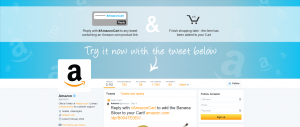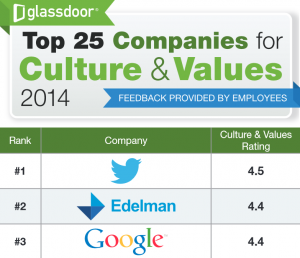 Since Twitter debuted a few years ago, the site has been considered a social destination — a cross between blogging and social networking dubbed microblogging where users can share 140-character or less snippets with links to more content through third-party, off-site applications. This week, the Twitter team announced that the time has come for the Twitter brand to be repositioned as a news site rather than a social site and with that comes a redesign of the Twitter site.
Since Twitter debuted a few years ago, the site has been considered a social destination — a cross between blogging and social networking dubbed microblogging where users can share 140-character or less snippets with links to more content through third-party, off-site applications. This week, the Twitter team announced that the time has come for the Twitter brand to be repositioned as a news site rather than a social site and with that comes a redesign of the Twitter site.
The reason for a Twitter brand repositioning is cited as a change in usage habits. No longer are people tweeting simply to converse with other users. Today, people tweet breaking news as they witness it. Examples include an eyewitness who tweeted the crash of an airplane in New York’s Hudson River, news from people in Iran during the protests following a controversial election, and even tweets from people trapped with few other communication options after earthquakes destroyed areas of Haiti.
Both journalists and individuals turn to Twitter as a place to share news and consume news, and it’s that news consumption that Twitter sees as leading the next generation of the site. The new redesign is intended to keep people on the site longer, whether or not they are actively tweeting. If people spend more time on the site, advertisers will be more inclined to invest and those investments will be larger.
It makes sense that the Twitter redesign is being rolled out with a two-pane design — one where tweets are visible and another where additional related content will be displayed. According to an article from BBC News, Twitter reports having closed deals with, “16 photo and video sites including YouTube and Flicker to have their visual content embedded on the site.” In other words, contextually relevant content will appear alongside the tweets that people are already interested in. It stands to reason that if the additional content is interesting to both Twitter users and Twitter consumers, those people will stick around and take a closer look at that content.
What do you think? Has the Twitter brand evolved organically into a news source or is it still a social site that happens to offer an easy way for news to spread quickly? Will the Twitter team’s efforts at repositioning the site as a news destination rather than a social destination work? Leave a comment and share your thoughts on this interesting branding story that truly is playing out in real-time right before our eyes.
Image: stock.xchng
Susan Gunelius is the author of 10 marketing, social media, branding, copywriting, and technology books, and she is President & CEO of KeySplash Creative, Inc., a marketing communications company. She also owns Women on Business, an award-wining blog for business women. She is a featured columnist for Entrepreneur.com and Forbes.com, and her marketing-related articles have appeared on websites such as MSNBC.com, BusinessWeek.com, TodayShow.com, and more.
She has over 20 years of experience in the marketing field having spent the first decade of her career directing marketing programs for some of the largest companies in the world, including divisions of AT&T and HSBC. Today, her clients include large and small companies around the world and household brands like Citigroup, Cox Communications, Intuit, and more. Susan is frequently interviewed about marketing and branding by television, radio, print, and online media organizations, and she speaks about these topics at events around the world. You can connect with her on Twitter, Facebook, LinkedIn, or Google+.


